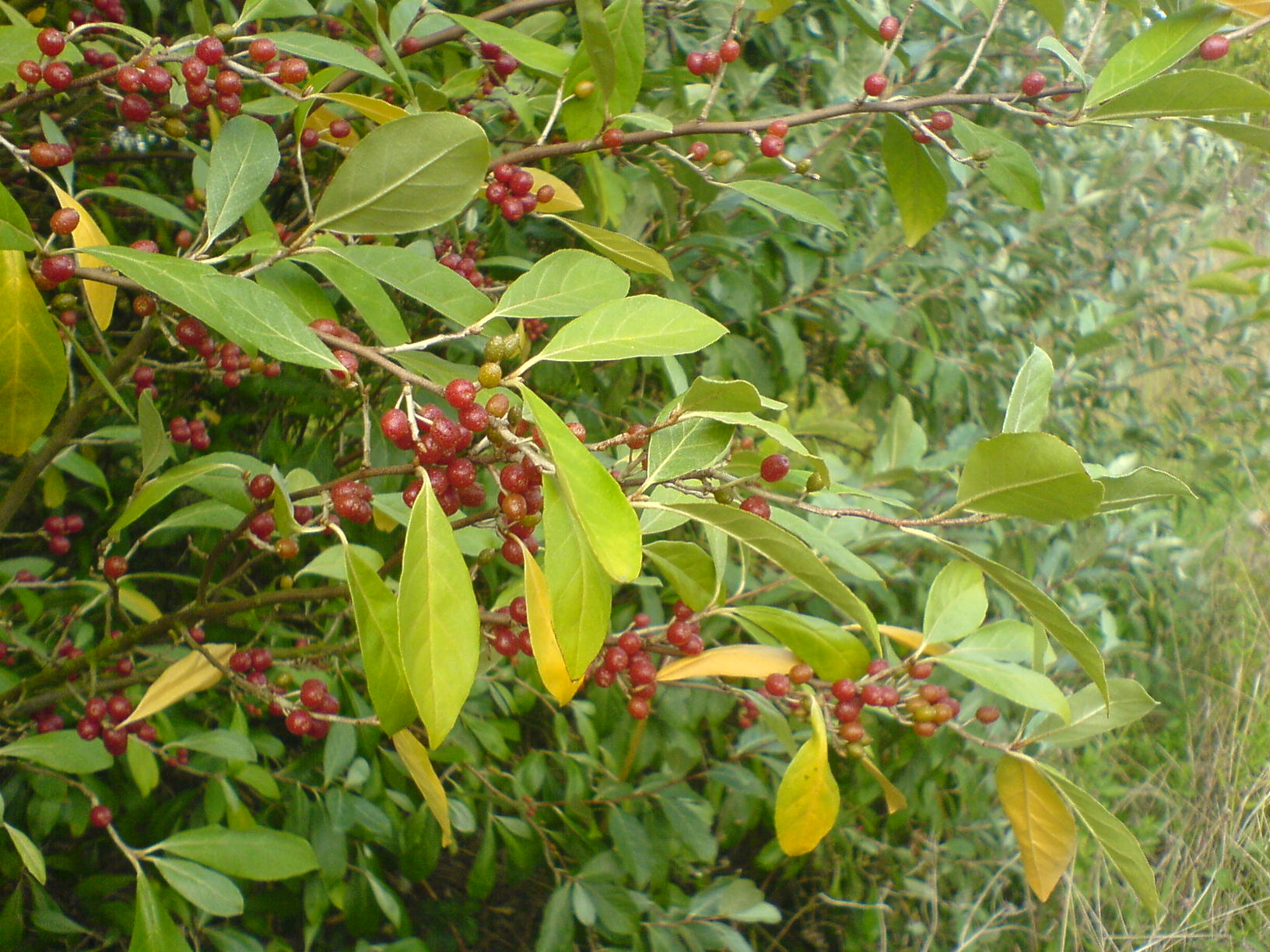My forestry research work took me to the USA and Italy looking for the best ways to grow walnut trees for timber. Foresters in both countries pioneered the planting of nitrogen-fixing trees or shrubs with hardwood trees, where their ability to improve soil fertility for ‘hungry’ species, such as walnut, had proven very beneficial.

The most promising companion plant for walnut seemed to be a little known shrub in forestry, Elaeagnus umbellata, sometimes known as spreading oleaster or Autumn olive. This five metre tall and wide shrub fixes atmospheric nitrogen and makes it available to other neighbouring plants. Its wide-spreading crown quickly smothers competing weeds and it protects young trees from wind. When planted in a hardwood tree plantation its limited height does not compete with the main crop. Finally, as a drought-tolerant plant too, it can be considered future-proof in the light of projected climate change.
In the USA Elaeagnus umbellata is listed as an invasive species but here in the UK we have been growing it in our parks and gardens for 200 years without any such problem. In the forestry trials I established across four sites in England in 2000 the shrub has been shown to increase walnut survival and growth, and there has been no sign of invasiveness.
You can find more about this work and similar research on my publications page:
JR Clark and GE Hemery, “The use of autumn olive (Elaeagnus umbellata Thunb.) in British forestry,” Quarterly Journal of Forestry 100, no. 4 (2006): 285-288.
Gabriel Hemery
 This work is licensed under a Creative Commons Attribution- NonCommercial- NoDerivs 3.0 United States License.
This work is licensed under a Creative Commons Attribution- NonCommercial- NoDerivs 3.0 United States License.

Hello Dear Gabriel
I am Ardeshir from Iran, the origin of the first and oldest economic walnut tree on the world that is known as Persian/English walnut. I like to know how many elaeagnus tree around the walnut tree can maximize the walnut production? I usually read about the 7*7 orchard design for chandler walnut as the best plan but what is the best orchard design with walnut and elaeagnus? I like to know about your experience. Thank you!
Best wishes
Ardeshir
Hi Ardeshir – many thanks for the question. My experiences with growing walnuts and Eleagnus are only in timber plantations, not in nut orchards. In timber plantations, I designed the spacing to ensure that the canopies of the Eleagnus (which can grow to 5m in diameter) would expand enough to surround the base of each walnut tree. I imagine that in a commercial nut orchard this would be a problem in making collection problematic? In which case, you could include them in line with a row of walnuts, allowing some access between rows (to the side).
Gabriel
I’m keen to try this here in southwest Scotland. Where does one find Eleagnus umbellata in quantity and at an affordable price for semi-commercial planting?
Alexander Scott
Thanks for your interest and comment Alexander.
I ordered my bulk numbers from my local tree nursery but they needed to bring them in for me from Holland. I don’t know whether any British tree nurseries tend to stock this species (only variegated cultivars). This was Nicholson Nurseries in Oxfordshire but you may find your own local nursery may be just as accommodating.
I hope this helps. I would be very interested to hear how the planting develops over time. By the way I hope you are planting some quality walnuts? Other readers may be interested in what you’ve chosen for that far north and where you sourced them.
Best wishes
Gabriel